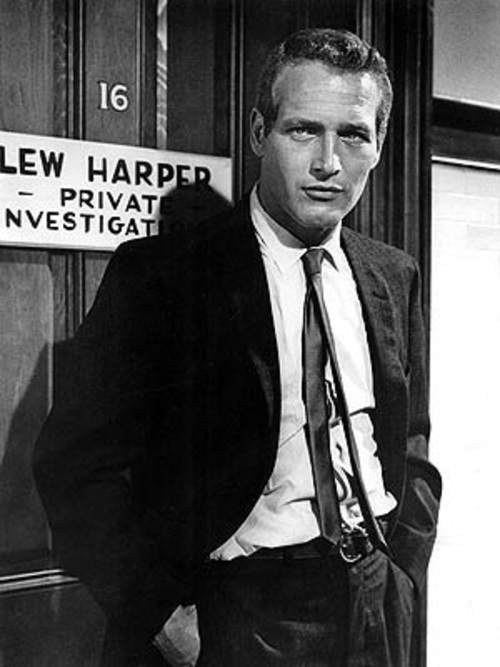Paul Newman Harper
- The photo has no copyright markings on it.
- United States Copyright Office page 2 "Visually Perceptible Copies The notice for visually perceptible copies should contain all three elements described below. They should appear together or in close proximity on the copies.
- 1 The symbol © (letter C in a circle); the word “Copyright”; or the abbreviation “Copr.”
- 2 The year of first publication. If the work is a derivative work or a compilation incorporating previously published material, the year date of first publication of the derivative work or compilation is sufficient. Examples of derivative works are translations or dramatizations; an example of a compilation is an anthology. The year may be omitted when a pictorial, graphic, or sculptural work, with accompanying textual matter, if any, is reproduced in or on greeting cards, postcards, stationery, jewelry, dolls, toys, or useful articles.
- 3 The name of the copyright owner, an abbreviation by which the name can be recognized, or a generally known alternative designation of owner.1 Example © 2007 Jane Doe."
- It was created for publicity purposes-distribution to the media. The image was meant to bring attention and publicity to the actors. (Examples of the picture on press articles on this link)
- This is a publicity photo taken to promote a film actor. As stated by film production expert Eve Light Honthaner in The Complete Film Production Handbook, (Focal Press, 2001 p. 211.):
- "Publicity photos have traditionally not been copyrighted. Since they are disseminated to the public, they are generally considered public domain, and therefore clearance by the studio that produced them is not necessary."[1]
Creative Clearance offers similar advice for older publicity stills but distinguishes "Publicity Photos (star headshots)" from "Production Stills (photos taken on the set of the film or TV show during the shooting)". It says newer publicity stills may contain a copyright, and production stills "must be cleared with the studio."[2]
Nancy Wolff, includes a similar explanation:
Legal expert on the use of photographic images, Nancy Wolff, includes a similar explanation:
- There is a vast body of photographs, including but not limited to publicity stills, that have no notice as to who may have created them. . .(The Professional Photographer's Legal Handbook By Nancy E. Wolff, Allworth Communications, 2007, p. 55.)
These photographs came from a photo archive of entertainment industry publicity pictures, historic still images widely distributed by the studios to advertise and promote their then new releases. While not considered valuable at the time, avid collectors have created complete archives by salvaging and cataloging movie and television photographs, preserving a significant facet of American culture. These archives are a valuable cache for publishers who rely on these archives as a resource for entertainment material."[3]
Film industry author Gerald Mast, in Film Study and the Copyright Law (1989) p. 87, writes:
Film industry expert Gerald Mast explains how the new 1989 copyright revisions only protected publicity works that complied with all earlier requirements in addition to filing a copyright registration within 5 years of first publication:
- "According to the old copyright act, such production stills were not automatically copyrighted as part of the film and required separate copyrights as photographic stills. The new copyright act similarly excludes the production still from automatic copyright but gives the film's copyright owner a five-year period in which to copyright the stills. Most studios have never bothered to copyright these stills because they were happy to see them pass into the public domain, to be used by as many people in as many publications as possible."[4]
Więcej informacji o licencji można znaleźć tutaj. Ostatnia aktualizacja: Mon, 09 Jan 2023 15:23:23 GMT
